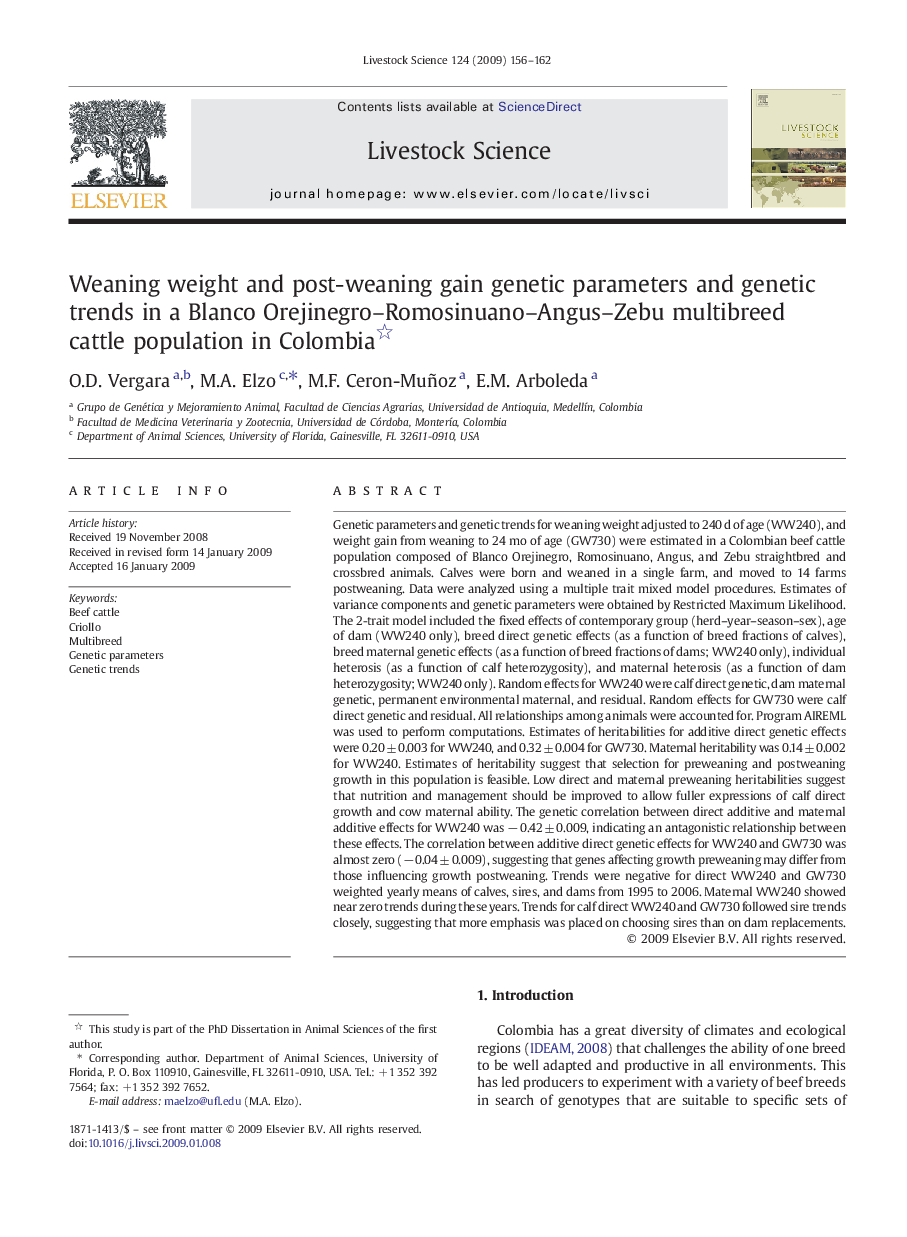| کد مقاله | کد نشریه | سال انتشار | مقاله انگلیسی | نسخه تمام متن |
|---|---|---|---|---|
| 2448054 | 1554008 | 2009 | 7 صفحه PDF | دانلود رایگان |

Genetic parameters and genetic trends for weaning weight adjusted to 240 d of age (WW240), and weight gain from weaning to 24 mo of age (GW730) were estimated in a Colombian beef cattle population composed of Blanco Orejinegro, Romosinuano, Angus, and Zebu straightbred and crossbred animals. Calves were born and weaned in a single farm, and moved to 14 farms postweaning. Data were analyzed using a multiple trait mixed model procedures. Estimates of variance components and genetic parameters were obtained by Restricted Maximum Likelihood. The 2-trait model included the fixed effects of contemporary group (herd–year–season–sex), age of dam (WW240 only), breed direct genetic effects (as a function of breed fractions of calves), breed maternal genetic effects (as a function of breed fractions of dams; WW240 only), individual heterosis (as a function of calf heterozygosity), and maternal heterosis (as a function of dam heterozygosity; WW240 only). Random effects for WW240 were calf direct genetic, dam maternal genetic, permanent environmental maternal, and residual. Random effects for GW730 were calf direct genetic and residual. All relationships among animals were accounted for. Program AIREML was used to perform computations. Estimates of heritabilities for additive direct genetic effects were 0.20 ± 0.003 for WW240, and 0.32 ± 0.004 for GW730. Maternal heritability was 0.14 ± 0.002 for WW240. Estimates of heritability suggest that selection for preweaning and postweaning growth in this population is feasible. Low direct and maternal preweaning heritabilities suggest that nutrition and management should be improved to allow fuller expressions of calf direct growth and cow maternal ability. The genetic correlation between direct additive and maternal additive effects for WW240 was − 0.42 ± 0.009, indicating an antagonistic relationship between these effects. The correlation between additive direct genetic effects for WW240 and GW730 was almost zero (− 0.04 ± 0.009), suggesting that genes affecting growth preweaning may differ from those influencing growth postweaning. Trends were negative for direct WW240 and GW730 weighted yearly means of calves, sires, and dams from 1995 to 2006. Maternal WW240 showed near zero trends during these years. Trends for calf direct WW240 and GW730 followed sire trends closely, suggesting that more emphasis was placed on choosing sires than on dam replacements.
Journal: Livestock Science - Volume 124, Issues 1–3, September 2009, Pages 156–162